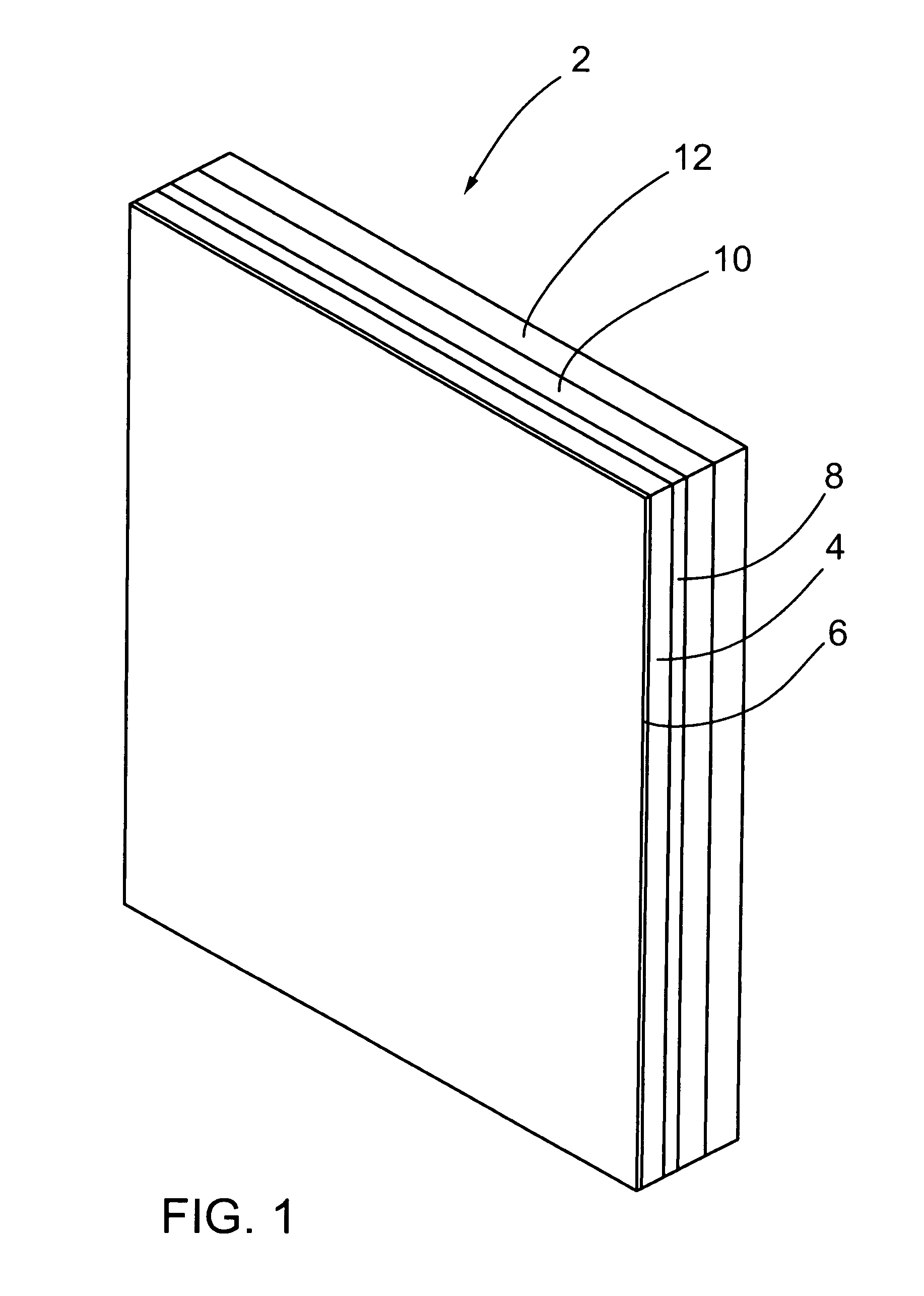Ceramic armour and method of construction
a technology of ceramic armour and construction method, which is applied in the field of armor, can solve the problems of bulging deformation of the back surface of the armor, insufficient protection or any protection against armor piercing and/or high-energy projectiles, so as to improve the penetration resistance, reduce deformation, and high-energy projectiles
- Summary
- Abstract
- Description
- Claims
- Application Information
AI Technical Summary
Benefits of technology
Problems solved by technology
Method used
Image
Examples
example 1
[0050]A multi-component armor plate has a confinement layer 6, ceramic layer 4 and first metal layer 8 that is 250 mm wide and 300 mm in height. The ballistic composite layer 10, a second metal layer 22 and anti-trauma layer 12 have dimensions of 250 mm in width by 300 mm in height. The total mass is approximately 4.8 kg.
[0051]In Example 1, the layers have the following thicknesses:
ThicknessMaterial2mmConfinement Layer (S-Glass with Structural Adhesive)11.1mmCeramic Layer (Silicon Carbide Manufactured by Saint-Gobain)1mmFirst Metal Layer—Titanium18.5mmBallistic composite layer consisting of 37 Layers ofKevlar ™ 129 with PVB Phenolic Matrix1mmSecond Metal Layer—Titanium15mmAnti-Trauma Layer
[0052]All layers in the example are bonded using a structural adhesive such as a urethane-based adhesive.
[0053]The design set out in Example 1 was evaluated using NIJ (National Institute of Justice) Standard 0101.04 (June 2001) (an applicable ballistic testing standard at the time of testing), whic...
PUM
| Property | Measurement | Unit |
|---|---|---|
| thickness | aaaaa | aaaaa |
| thickness | aaaaa | aaaaa |
| thickness | aaaaa | aaaaa |
Abstract
Description
Claims
Application Information
 Login to View More
Login to View More - R&D
- Intellectual Property
- Life Sciences
- Materials
- Tech Scout
- Unparalleled Data Quality
- Higher Quality Content
- 60% Fewer Hallucinations
Browse by: Latest US Patents, China's latest patents, Technical Efficacy Thesaurus, Application Domain, Technology Topic, Popular Technical Reports.
© 2025 PatSnap. All rights reserved.Legal|Privacy policy|Modern Slavery Act Transparency Statement|Sitemap|About US| Contact US: help@patsnap.com



